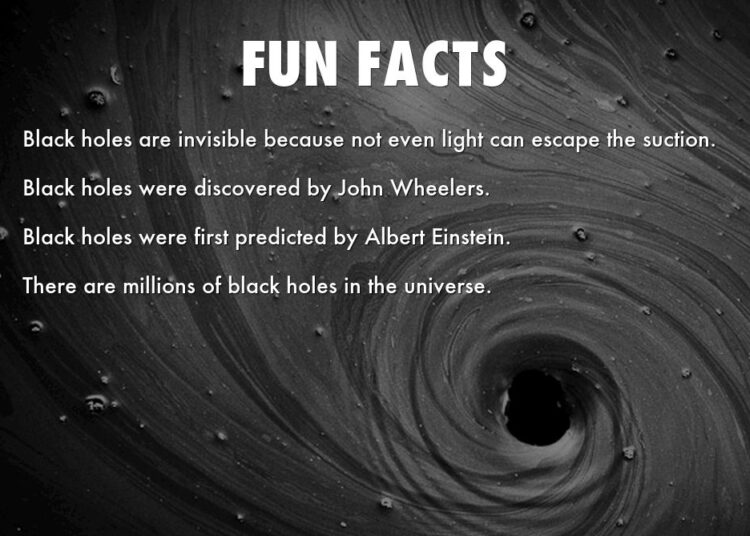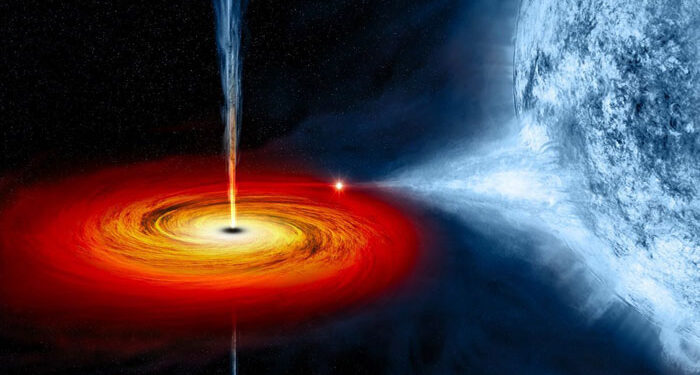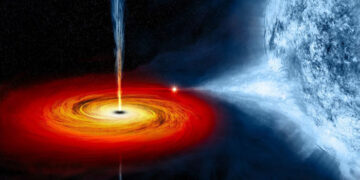Black holes are some of the most mysterious and fascinating objects in the universe. Here are a few interesting facts about them:

- Black holes come in different sizes. The smallest black holes, called “primordial black holes,” could be as small as an atom but have the mass of a mountain. The largest black holes, called “supermassive black holes,” can have masses millions or billions of times that of the sun.
- Black holes can form from the collapse of a star. When a star runs out of fuel and collapses, its core can become so dense that it collapses into a black hole.
- Black holes are so dense that their gravity is strong enough to bend light. This is why they are called “black” holes: because light cannot escape their gravity, they appear completely black to us.
- Black holes can spin. As a black hole spins, it drags space and time around with it, causing matter that gets too close to be pulled in. This process is called “frame dragging.”
- Black holes might be connected to other parts of the universe through “wormholes.” A wormhole is a hypothetical tunnel-like structure that could allow matter to travel from one point in space to another without crossing the space in between. Some scientists believe that black holes could be the “entrances” to these wormholes.
- Black holes might be able to evaporate. According to the theory of Hawking radiation, black holes should emit particles and radiation, which would cause them to lose mass over time. This means that black holes could eventually evaporate and disappear.





